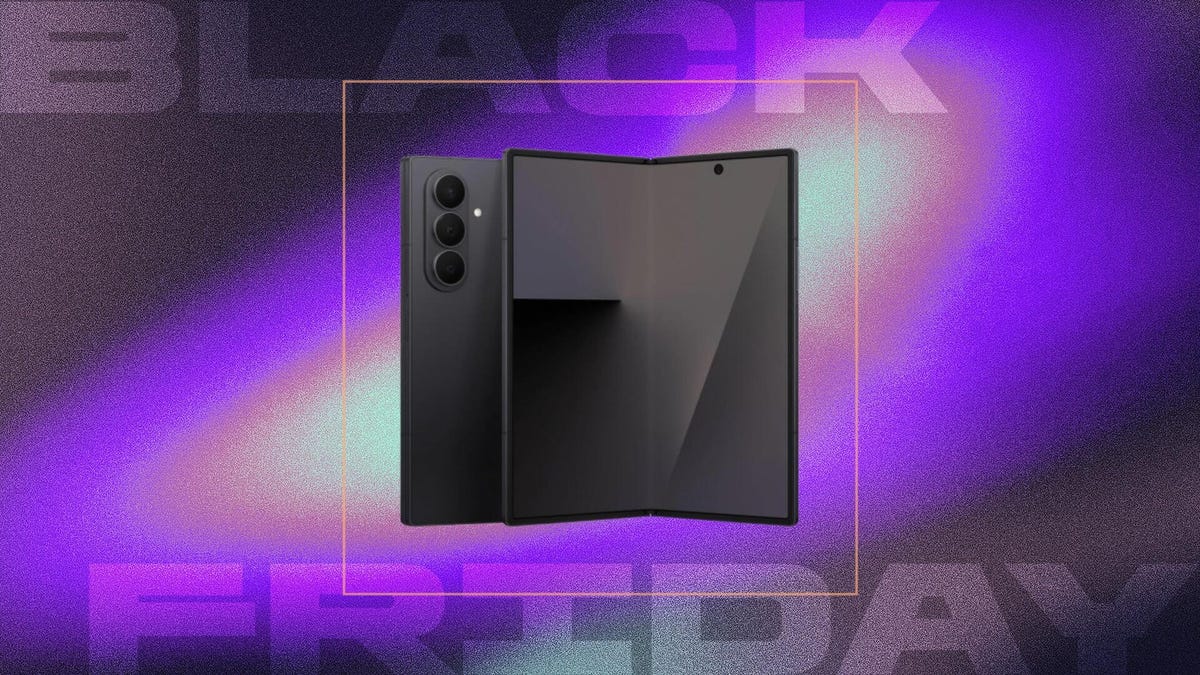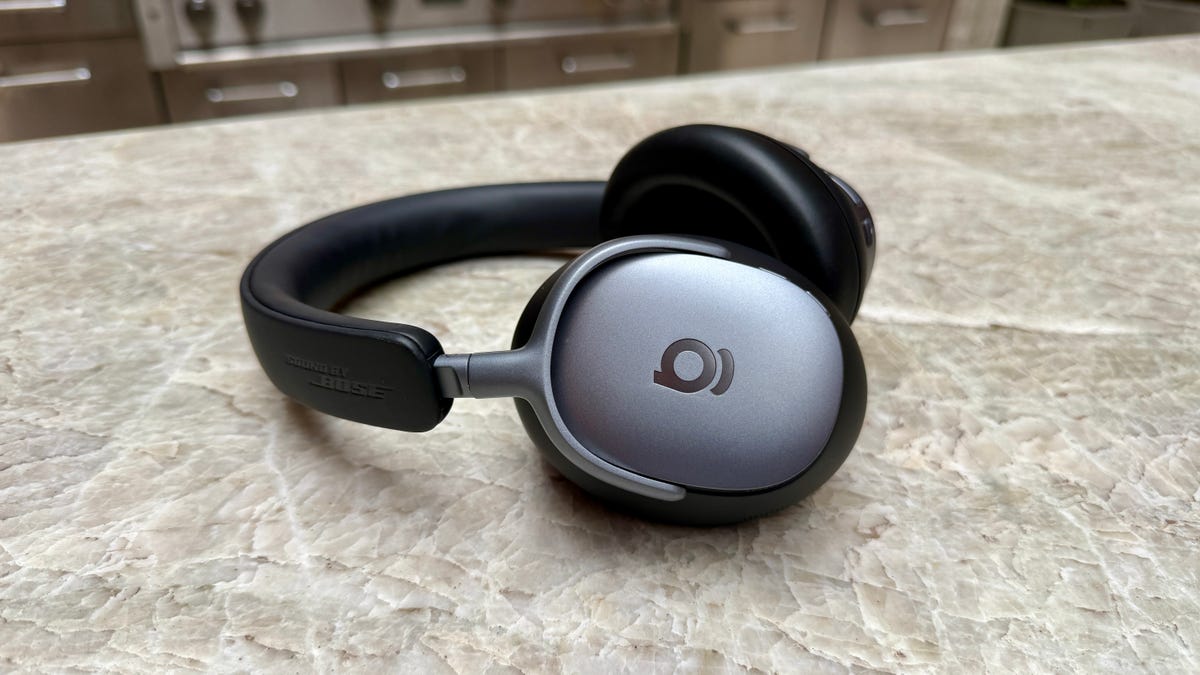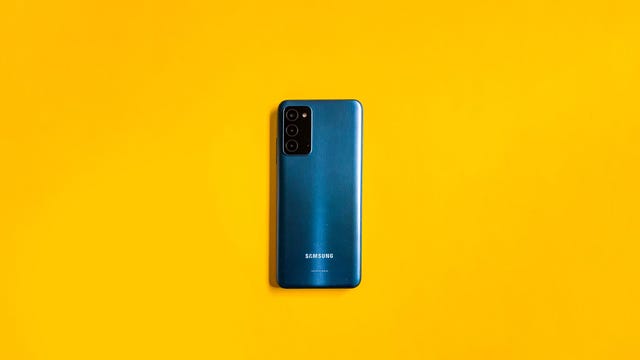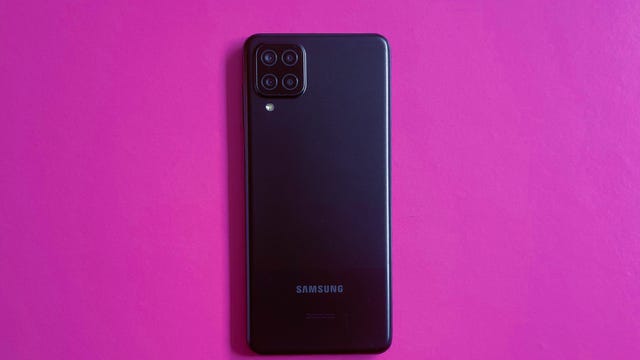Technologies
Best Phone Under $200: Cheaper Phones for Just the Basics
Devices that cost less than $200 should still be able to handle most apps, games and simple photography.

Smartphones can be expensive. But even if you’re on a budget, you can still find some great options. These are some of the best phones under $200 and they offer a mix of modern features alongside legacy ports you can’t find on today’s more expensive phones. For example, you can get a phone with a 6.5-inch screen and multiple cameras, plus a headphone jack and expandable storage with a microSD card slot.
However, there are trade-offs to keep in mind. Phones under $200 will likely run slower than their pricier counterparts, lack NFC for contactless payments and may receive only one software update. Most of them won’t support speedier 5G connections, either. But you can have peace of mind knowing that they can support most apps from the Google Play Store and will receive a few years of security updates.
What’s the best phone under $200?
Phones that cost $200 before any discounts are also phones that come with minimal features and many compromises. Of the devices we’ve tested and reviewed, the Samsung Galaxy A12 is our favorite. It nails the essentials, like having a 5,000-mAh battery, four average cameras, and years of software and security updates. There’s the newer Galaxy A13 and the just-released Galaxy A14 (which we need to test), but the A12 still hits that sub-$200 price and can often be found selling for less than $100, or even as a freebie.
Advertiser Disclosure
Best phones under $200 of 2023
Samsung’s Galaxy A03S at $160 (roughly £130, AU$240) includes plenty of great features and could be a great fit for someone looking for the cheapest possible phone that can handle most essential tasks. The phone’s 6.5-inch screen, capped at 720p resolution, is great for reading the news, watching videos, and playing games. Despite some performance lag found during our review, the phone is good at multitasking. But the phone’s tiny 32GB of storage space could fill up fast, so if considering this phone, it may be worthwhile to consider expanding the storage with a microSD card.
Samsung also plans to support this phone with at least four years of security updates, which at this price range is as good as it gets. On the software side, it’s less clear how many Android versions are scheduled, but the phone ships with Android 11 to start.
Even though Samsung’s Galaxy A13 has succeeded the Galaxy A12, you can still find the $180 Samsung phone at some US carriers, although it is otherwise discontinued on Samsung’s website. For instance, the Galaxy A12 is available at Straight Talk wireless at a lower $130 price. According to Counterpoint Research, the A12 was the best-selling Android phone of 2021, even outselling Apple’s iPhone SE (2020).
In our Galaxy A12 review, we found the phone took nicer photos than the cheaper Galaxy A03S thanks to its four-camera array with a 16-megapixel main camera, but it was still hindered by the same 32GB of onboard storage seen across all of Samsung’s sub-$200 phones.
While we haven’t tested the Galaxy A13, it’s possible that the $190 4G-only version of that phone is worth considering for its 50-megapixel main camera. But if you do plan to buy the Galaxy A12, know that the phone’s 3GB of memory handled multitasking well during our review, but experienced some lag when shifting between horizontal and vertical screen orientations.
The $130 Samsung Galaxy A02S was released in late 2020, and is still listed on Samsung’s website along with some wireless carriers. The phone originally shipped with Android 10, but has since received an update to Android 12 with Samsung’s One UI 4.1. Even though the Galaxy A02S is the lowest-priced phone in Samsung’s Galaxy line, the continued software and security updates should provide buyers with feature refinements along with protection from vulnerabilities.
During our review, we found multitasking to be the phone’s main shortcoming, along with the tiny 32GB of storage space included. The phone also has no fingerprint sensor, which means a security PIN or pattern will be necessary in order to keep the phone secure.
But the phone does include a microSD card slot for adding additional storage, a headphone jack and a large 6.5-inch 720p screen. If you just need a simple phone primarily for phone calls, texting and taking the occasional photo, then the Galaxy A02S could be a worthwhile choice.
How we test phones
Every phone on this list has been thoroughly tested by CNET’s expert reviews team. We actually use the phone, test the features, play games, and take photos. We assess any marketing promises that a company makes about its phones. And if we find something we don’t like, be it battery life or build quality, we tell you all about it.
We examine every aspect of a phone during testing:
- Display.
- Design and feel.
- Processor performance.
- Battery life.
- Camera quality.
- Features.
We test all of a phone’s cameras (both front and back) in a variety of conditions: from outdoors under sunlight to dimmer indoor locales and nighttime scenes (for any available night modes). We also compare our findings against similarly priced models. We run a series of real-world battery tests to see how long a phone lasts under everyday use.
We take into account additional phone features, like 5G, fingerprint and face readers, styluses, fast charging, foldable displays, and other useful extras. And we, of course, weigh all of our experiences and testing against the price, so you know whether a phone represents good value.
Read more: How we test phones
Phones under $200 FAQs
Are cheaper phones worth it?
Phones that are under $200 just focus on the essentials, which means you’ll have to make some compromises. You’ll be able to make phone calls, text, video chat, browse the web and run most Android apps on these devices. But you shouldn’t expect NFC for mobile payments, 5G connectivity or — unfortunately — much included storage space.
However, these phones otherwise function well and could be what you’re looking for if all you need is a good communication device. They also include features that are becoming increasingly harder to find in more expensive phones, such as an included charger in the box, a headphone jack on the phone, and a microSD card slot for adding more storage.
That said, if you’re finding that your phone needs go beyond basic communication, you may want to consider phones that are under $300 or phones under $500, if you can expand your budget.
What about phones that are even cheaper, like under $100?
Phones under $100 do exist, but they usually come with significant compromises.
For instance, the TCL 30 Z is one of the cheapest Android 12 phones available, at $90. Though we haven’t tested this phone, I have noticed that it uses the antiquated micro-USB port for charging.
Most other Android phones and wireless headphones, even those in the budget price range, now use USB-C for charging, meaning you might find yourself scrambling for a charger if you misplace it. The phone is also getting only one major software update to Android 13 and two years of security updates, which is short but comparable to some phones sold under $300.
We haven’t reviewed any flip phones recently, but anyone looking for a device made specifically for phone calls should be well-served by most available options. Flip phones support 4G signals and — more importantly — HD Voice for clearer voice calls. Some flip phones even support modern apps like WhatsApp and the Google Assistant, albeit in a more limited way compared with how these services function on a smartphone. The , for instance, is a flip phone running on the brand’s KaiOS, which supports downloadable apps and services.
More phone advice
Technologies
The Black Friday Gaming Deals You Want Are Already Here, Including PlayStation, Xbox and Alienware
Technologies
The Black Samsung Galaxy Z Fold 7 Is at a Record $443 Off at Amazon for Black Friday
A Galaxy Z Fold 7 price war between Amazon and Samsung gives us a record-low deal for one color.

If you’re looking for a foldable iPhone, you’re gonna need to wait until 2026, but if you’re looking for the best foldable phone of 2025, there are great deals on the Galaxy Z Fold 7 right now at both Amazon and Samsung, with the former dropping the black version of Samsung’s foldable phone to a record-low $1,557. All other models are $1,600 at both Amazon and Samsung, a $400 discount.
Samsung’s unique foldable phones had an awkward adolescence, but after getting her hands on the new lineup, CNET reviewer Abrar Al-Heet confirms that the latest Z Fold 7 «just feels right.» For one, it’s incredibly sleek at just 8.9mm thick when closed or 4.2mm thick when open, which is so thin you may even forget that it’s foldable.
Hey, did you know? CNET Deals texts are free, easy and save you money.
Despite weighing just 215 grams, this foldable features some serious hardware. It has a 6.5-inch cover screen and an 8-inch interior display with a fluid 120Hz refresh rate. It’s equipped with a cutting-edge Snapdragon 8 Elite processor and 12GB of RAM to support tons of helpful AI features and functions, and comes with Android 16 and Samsung One UI 8 right out of the box.
The camera system is also pretty impressive, boasting a 200-megapixel rear camera, 12-megapixel ultrawide shooting and a 10-megapixel front camera on both the cover and interior screens. Plus, it’s equipped with a 4,400-mAh battery for all-day use.
MOBILE DEALS OF THE WEEK
-
$749 (save $250)
-
$475 (save $175)
-
$499 (save $300)
-
$900 (save $400)
Why this deal matters
With an unbelievably sleek design and cutting-edge hardware, the impressive Samsung Galaxy Z Fold 7 is our favorite foldable phone on the market. But it also comes with a staggering $2,000 price tag, and if you’re hoping to get your hands on one, this $443 discount is a way to rack up some serious savings and help cushion the blow of its considerable cost. Just be sure to get your order in soon, as we doubt this deal will remain live for long.
Join Our Daily Deals Text Group!
Get hand-picked deals from CNET shopping experts straight to your phone.
By signing up, you confirm you are 16+ and agree to receive recurring marketing messages at the phone number provided. Consent is not a condition of purchase. Reply STOP to unsubscribe. Msg & data rates may apply. View our Privacy Policy and Terms of Use.
Technologies
I Almost Missed This Deal Within a Deal for Baseus’ Bose-Infused Headphones and Earbuds
Baseus’ new Inspire XH1, XP1 and XC1 models with Sound by Bose are 23% to 33% off for Black Friday and Cyber Monday. But Baseus throws in its BC1 clip-on earbuds or other «free» bonus items to make the deal even sweeter.

I gave CNET Editors’ Choice awards to Baseus’ Bose-infused Baseus Inspire XH1 headphones and Inspire XP1 earbuds because they’re well designed and sound decent for what they cost. I also liked Baseus’ Inspire XC1 clip-on earbuds, which have dual- drivers and earned a spot on CNET’s best clip-on earbuds list.
Last week all three models were selling for around $110 (though they have higher list prices), but they’re now discounted to around $100 for Black Friday and Cyber Monday. That’s a deal I’d highlight on its own, but if you click through to any of those models’ Amazon product pages an look closely you’ll see that each is eligible for «one free item» with purchase.
Read more: Best wireless earbuds of 2025
You have to click the «how to claim link» and then add one of the three products to the your cart. Once one of the headphones or earbuds is added to your cart, you can click a button on the left side of screen (above the stars for average ratings) that switches the view from «qualifying items» to «benefit items.» You can then add Baseus’s BC1 clip-on earbuds, which list for $40, to your cart as a free item. Baseus’ step-up Basues MC1 Pro ($48 for Black Friday) and Inspire XC1 clip-on buds sound better, but the BC1 are fine for casual use.
If the BC1 earbuds option doesn’t thrill you, there are other freebies you can opt for. Just go back to the Amazon product page for the Inspire XH1, XP1 and XC1 and you’ll see options for one free item with $100, $90, $51 and $46 purchases. The $90 benefit item is a 30W dual-port fast charger (list price $20), which is decent, and the $51 benefit item is a retractable USB-C cable ($19 list) that’s useful. Don’t bother with the $46 benefit item.
You can read my full reviews of the Inspire XH1 headphones here and the Inspire XP1 earbuds here. And here’s my quick take of the Inspire XC1 earbuds:
Like Baseus’ noise-isolating Inspire XP1 earbuds that I rated highly, the Inspire XC1 feature «Sound by Bose» and a more premium design than earlier Baseus earbuds. The XC1 don’t sound as good as the XP1, but they sound good for open earbuds and are equipped with dual drivers, one of which is a Knowles balanced-armature driver that helps improve treble performance. While they don’t produce as much bass as noise-isolating earbuds like the Inspire XP1, their bass performance is better than I expected. The buds’ sound is pretty full, especially in quieter environments, though they do better with less bass-heavy material (I did notice a bit of distortion at higher volumes with certain tracks with harder driving bass).
While I prefer the design and fit of Bose’s Ultra Open Earbuds (as well as the design of their case) and think the Bose buds sound more natural and a tad better overall, the much more affordable Inspire XC1 fit comfortably and offer top-tier sound for clip-on open earbuds (and they play louder than the Bose), as well as decent voice-calling performance with good background noise reduction.
HEADPHONE DEALS OF THE WEEK
-
$248 (save $152)
-
$170 (save $181)
-
$298 (save $131)
-
$199 (save $150)
Read more: Best Black Friday headphones deals
Join Our Daily Deals Text Group!
Get hand-picked deals from CNET shopping experts straight to your phone.
By signing up, you confirm you are 16+ and agree to receive recurring marketing messages at the phone number provided. Consent is not a condition of purchase. Reply STOP to unsubscribe. Msg & data rates may apply. View our Privacy Policy and Terms of Use.
-

 Technologies3 года ago
Technologies3 года agoTech Companies Need to Be Held Accountable for Security, Experts Say
-

 Technologies3 года ago
Technologies3 года agoBest Handheld Game Console in 2023
-

 Technologies3 года ago
Technologies3 года agoTighten Up Your VR Game With the Best Head Straps for Quest 2
-

 Technologies4 года ago
Technologies4 года agoBlack Friday 2021: The best deals on TVs, headphones, kitchenware, and more
-

 Technologies4 года ago
Technologies4 года agoVerum, Wickr and Threema: next generation secured messengers
-

 Technologies4 года ago
Technologies4 года agoGoogle to require vaccinations as Silicon Valley rethinks return-to-office policies
-

 Technologies4 года ago
Technologies4 года agoOlivia Harlan Dekker for Verum Messenger
-

 Technologies4 года ago
Technologies4 года agoiPhone 13 event: How to watch Apple’s big announcement tomorrow



